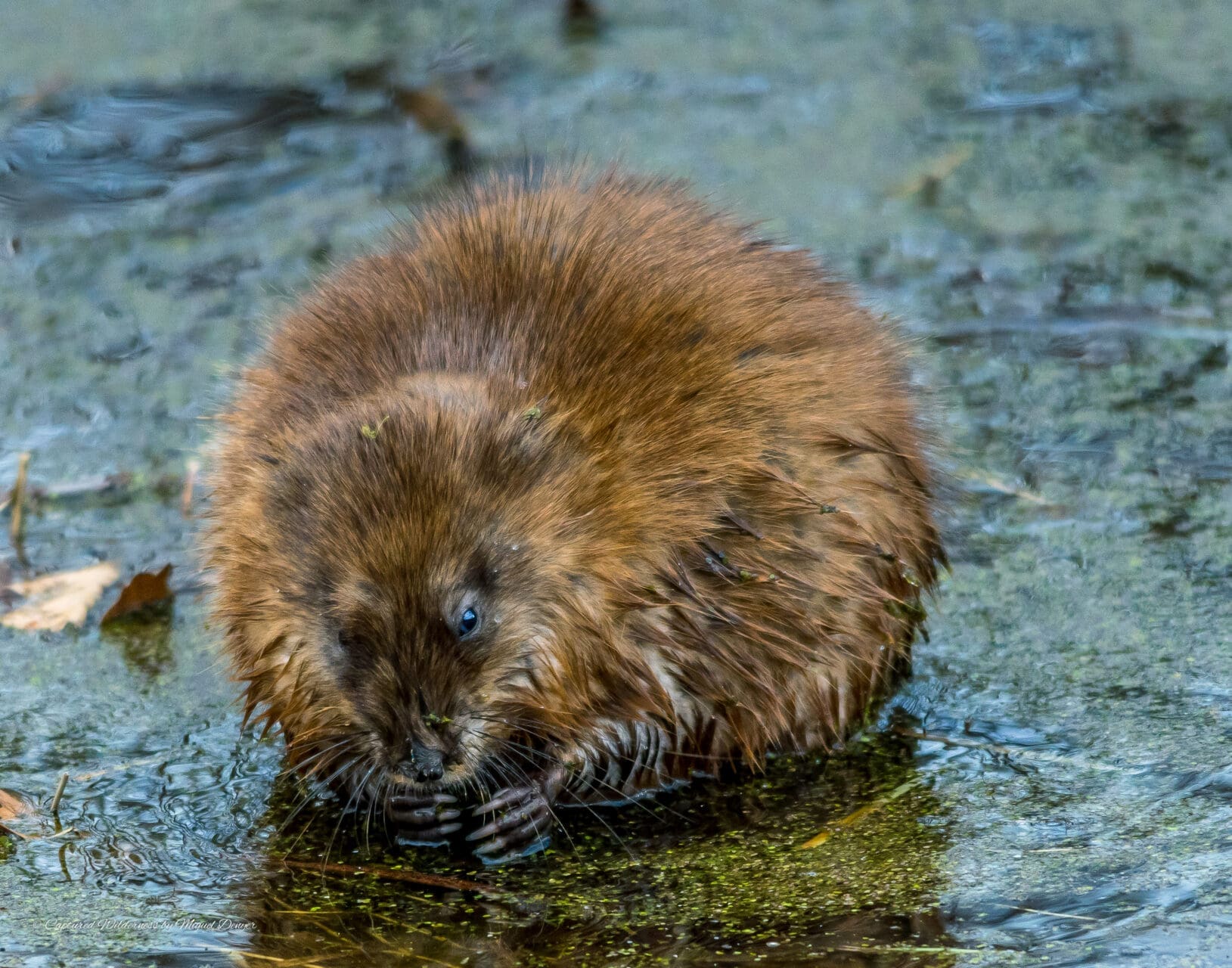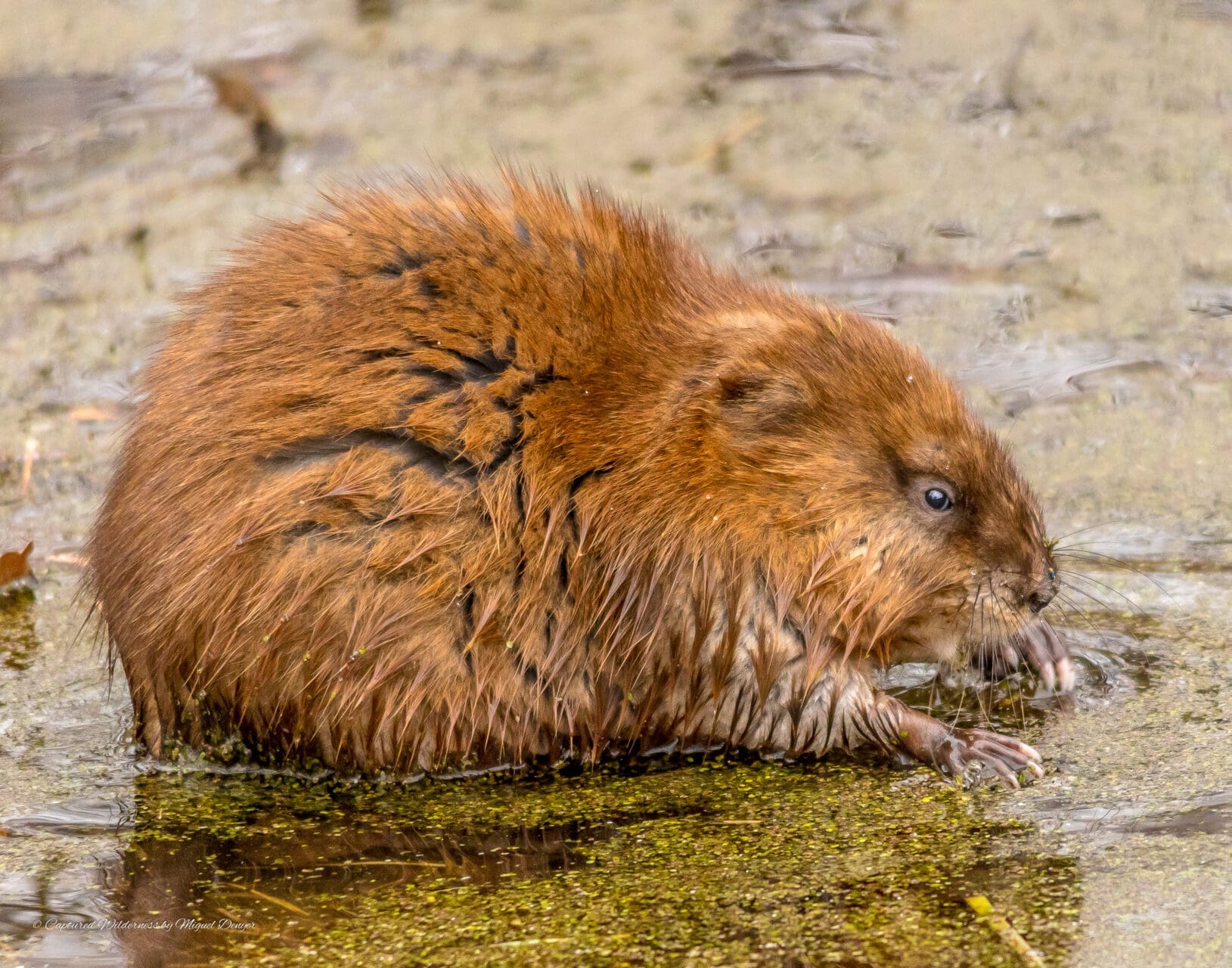Muskrats, often overlooked amid the flashier wildlife spectacles, play a crucial yet understated role in their aquatic ecosystems. These medium-sized rodents, known scientifically as Ondatra zibethicus, are distinguished by their compact, robust bodies, dense fur, and a scaly, laterally flattened tail that propels them expertly through water. Native to North America, muskrats have adapted to a variety of wetland habitats including lakes, ponds, rivers, and marshes, making their presence known from northern Canada to the marshy wetlands of the southern United States.

The habitat of the muskrat is as fascinating as it is crucial for its survival. These creatures are not just inhabitants of their watery realms but also architects of their environments. They construct lodges and burrows that serve as homes and safe havens from predators. These structures, often built with vegetation and mud, not only provide shelter but also play a significant role in the structuring and natural development of wetlands. The changes muskrats make to their habitats can enhance plant diversity and influence the local water levels and flow.
Muskrats are primarily herbivores, feeding on a wide variety of plant materials, including cattails, water lilies, and rushes. In the winter, they may also consume small aquatic animals, such as fish and frogs. This diet helps control the growth of aquatic plants, thus maintaining a balance in their habitats. Interestingly, their eating habits and the subsequent impact on vegetation can significantly alter the aquatic environments they inhabit, affecting both plant and animal communities.

One intriguing aspect of muskrat behavior is their social structure during the breeding season. Typically solitary, muskrats become more social in the winter when they may share their lodges to conserve heat. During the breeding season, a female muskrat can have two to three litters each year, with each litter consisting of up to eight young. This high reproductive rate is crucial for maintaining their population, especially given the predation pressure from a variety of animals including foxes, coyotes, and large birds of prey.
Muskrats are not only significant as ecological engineers but also have an economic role. Historically, they have been trapped for their fur, which is both durable and water-resistant, making it highly valued in the clothing industry. Additionally, muskrat populations are considered indicators of wetland health. Observing changes in their populations can help ecologists assess the ecological integrity of wetland habitats. Thus, the muskrat, while small and often unnoticed, is a key player in the health and sustainability of its ecosystem, demonstrating the interconnectedness of even the smallest species with the larger environmental tapestry.


